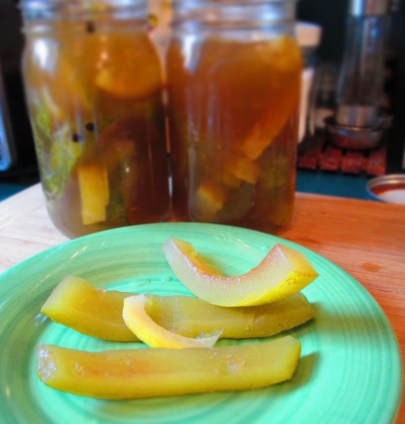
I hope you are all doing all right during the COVID-19 lockdown. Many of you are spending your time trying out new culinary delights, so I thought I’d throw this one into the mix.
I happened to get a container of beautiful fresh currants in a recent Misfits Market box and decided to do the simplest (and most practical) thing with it: jam.
Fresh currants are somewhat hard to find (at least in my part of the world), so this is a (really) small batch recipe. This will essentially give you enough jam for about 4 pieces of toast (or 2, if you like to slather it on).
Red Currant Jam
6 oz. red currants
¼ c + 3 tablespoons sugar
Wash the currants well by placing them in a bowl of water and adding a little vegetable wash or dish soap. Rinse them well in a mesh strainer (especially if you use dish soap).
Remove the stems and discard them. If you’re going to use the traditional canning method, prepare a small jar.
Place the currants in a small nonreactive (non-aluminum) pot and crush them lightly with a fork or potato masher. Add the sugar and 2 teaspoons water and stir. Bring to a boil over high heat. Continue to boil, stirring frequently, until the mixture coats the back of a spoon without dripping, about 10 to 15 minutes.
Add the sugar and 2 teaspoons water and stir. Bring to a boil over high heat. Continue to boil, stirring frequently, until the mixture coats the back of a spoon without dripping, about 10 to 15 minutes. Spoon the jam into a clean jar and seal it. If you’ve sealed it using the canning method, the jam will keep sealed up to a year. Otherwise, refrigerate up to 3 weeks.
Spoon the jam into a clean jar and seal it. If you’ve sealed it using the canning method, the jam will keep sealed up to a year. Otherwise, refrigerate up to 3 weeks.































 Rinse and dry the jalapenos. Cut off the tops, then slice them into 1/4-inch rings.
Rinse and dry the jalapenos. Cut off the tops, then slice them into 1/4-inch rings. In a small-medium saucepan, combine the vinegar, garlic, salt, and peppercorns with 1 cup water.
In a small-medium saucepan, combine the vinegar, garlic, salt, and peppercorns with 1 cup water. Bring the pot to a boil; lower the heat to a simmer.
Bring the pot to a boil; lower the heat to a simmer. With a slotted spoon, transfer the jalapenos and carrot to a clean jar with a tight-fitting lid.
With a slotted spoon, transfer the jalapenos and carrot to a clean jar with a tight-fitting lid. Pour the brine into the jar, making sure that everything is submerged.
Pour the brine into the jar, making sure that everything is submerged. Seal the jar and refrigerate for a week.
Seal the jar and refrigerate for a week.

 Add one cup water, the cipolline, and the remaining ingredients. Bring to a boil. Simmer about 45 minutes.
Add one cup water, the cipolline, and the remaining ingredients. Bring to a boil. Simmer about 45 minutes.